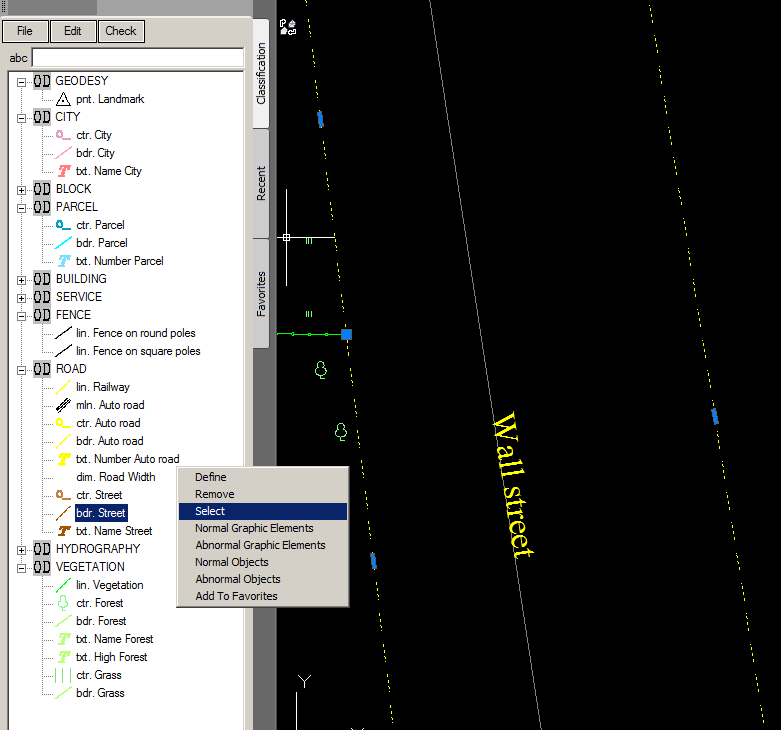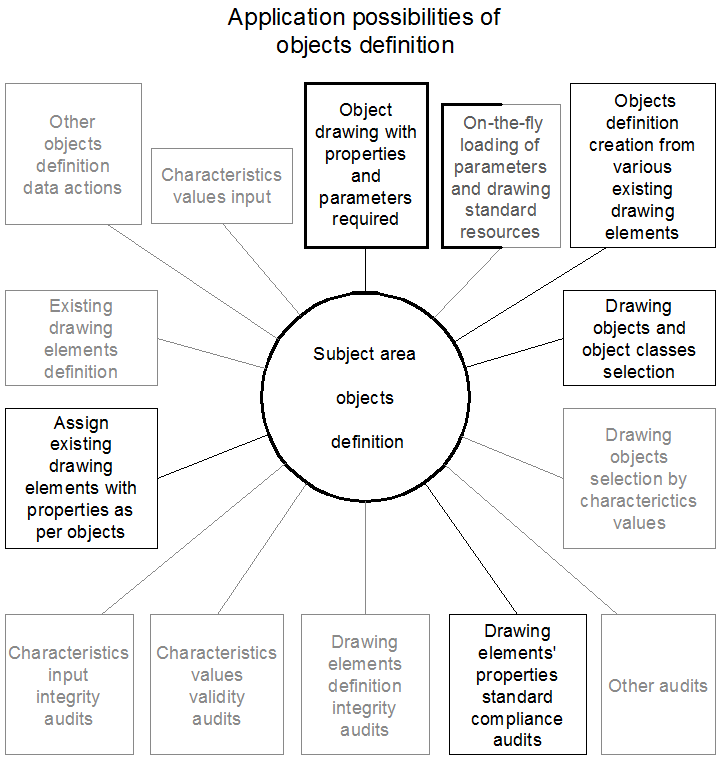How to transform Tool Palettes as an objects menu into
a much more useful and strong tool
Almost everyone knows well Tool Palettes (Ctrl + 3) – default AutoCAD tool with which it’s also possible to create objects menu for simultaneous drawing with the necessary graphical properties. Many of users make regular use of it. Many ready-to-use objects menus in the form of Tool Palettes are ordered and added to basic AutoCAD and its’ vertical solutions purchases by Autodesk itself.
(Those who know will suggest since what year Tool Palettes was added to AutoCAD – since 2004?, and was it somehow upgraded since then...).
The idea of Tool Palettes in terms of a menu for objects drawing is quite simple, versatile and convenient. This lies in the possibility for the users (without using programming, custom buttons & toolbars) to create a menu for drawing of any objects in any domain, and in the preservation of these objects’ descriptions in the external XML files. The latter can be distributed, passing ready-to-use menus of the same objects to any number of other users. Objects selection in Tool Palettes automatically activates proper drawing & insertion commands, activates proper predescribed objects’ graphical properties, loads proper block descriptions from the predefined files, creates layers with proper names, etc. In other words, the use of Tool Palettes as a menu for objects drawing relieves the user of the need to produce many mandatory actions while drawing process, i.e. reduces drawing complexity significantly and helps to standardize the properties of the objects drawn.
Tool Palettes have also some small and obvious realization drawbacks (automatically generated layers have only predefined names but not other parameters; it’s not clear how to define text width factor and obliquing angle or block reference scale, etc.), but these are not discussed further.
Let’s see in principle how Tool Palettes could be made more powerful and handy using only its’ main features and simple additional functions (obviously, it’s easy only for Autodesk...).
First, objects menus in Tool Palettes are single-level – it’s impossible to fully realize object classification, i.e. assign some actions to classification groups (classes, subclasses, etc.). Tool Palettes classification is currently realized only with many Palettes (e.g. as many classes as Palettes) or merely visually with text lines and line delimiters in the objects menu. As a result, large number object types menu requires multiple Palettes, multiple Palettes’ loads instead of one, switching between Palettes, the risks of XML description files loss during transmission and transmission of unnecessary XML files are increased. That is, the possibility of the whole classification display in a Palette given, the work for the user is simplified immediately and is much more convenient. It’s quite easy to implement using the standard tree menu. At the same time, users can reveal/close any of the object lists in classes-subclasses thus optimizing the look of the menu on the screen. Moreover, it can be quite convenient for the user to display the menu for many hundreds and even thousands of object types in a single panel.
Fig. Possible implementation of the tree menu example. With possibility of entities selection (Select). With possibility of matching/mismatching entities selection (Normal Graphical Elements / Abnormal Graphical Elements). With context-based text search (top, ABC). With possibility to define existing elements with desired properties (Define).
Second, it is advisable to make it easier for the users to select the desired object in the menu that can include not only dozens but hundreds and thousands of object types which lists obviously do not fit on one or multiple screens. Object selection can be eased with context-based text search, automatic creation of recently drawn objects lists, etc. It is also implemented quite easy with simple additional function.
Third, menu objects can be provided with the ability to search drawing entities with similar properties. If the Tool Palettes are implemented with object classification, it is advisable to add the ability to search among classification groups – to find drawing entities with whole specified object class properties, etc. It’s easy to implement as long as Palettes objects’ properties are described and stored in XML description file.
Fourth, Palettes can be provided with the possibility to select all drawing entities matching/mismatching Palettes objects. And it's not hard to implement, too, as long as all the properties of Palettes objects are described are stored in XML description file.
Fifth, Palettes can be provided with the possibility to define specified drawing entities with selected menu objects’ properties. E.g., specify a number of drawing polylines and assign all of them with the specified Palettes linear object property sets. It’s easy to implement as long as Palettes objects’ properties are stored in XML description file.
Sixthly, Palettes can be provided with the possibility to add many object descriptions – for all specified drawing entities with different properties. Currently, object descriptions only can be created one by one. There is no technical difficulty in such a function, too.
The possibility of these functions is already included in Tool Palettes, first of all – with the presence of external files describing the objects. All of these functions are easy to implement programmatically (for Autodesk developer). All of these functions are no more than simple improvements for users, consistent and full implementation of the existing capabilities in accordance with Tool Palettes purposes.

Fig.2. The possibilities of Tool Palettes are shown with black thick boxes, unused possibilities - black thin boxes. Common possibilities of the drawing standards application in principle are shown grey.
Thus, Tool Palettes with such improvements and amendments would turn into a tool of great capabilities and much better consumer properties – with compactness, better menu navigation, with possibilities of drawing entities selection & properties assignment, drawing standardization and quality control. It can be said, that it would be a tool of a different level or at least much more powerful and user-friendly. Moreover, it can be stated, that currently available useful features of Tool Palettes as an objects menu are unveiled only by about 25-30%.
I wanted to show with the help of the Tool Palettes example that even well-known and widely used ideas, even the most familiar tools might still have unused and unimplemented explicitly helpful custom features.


